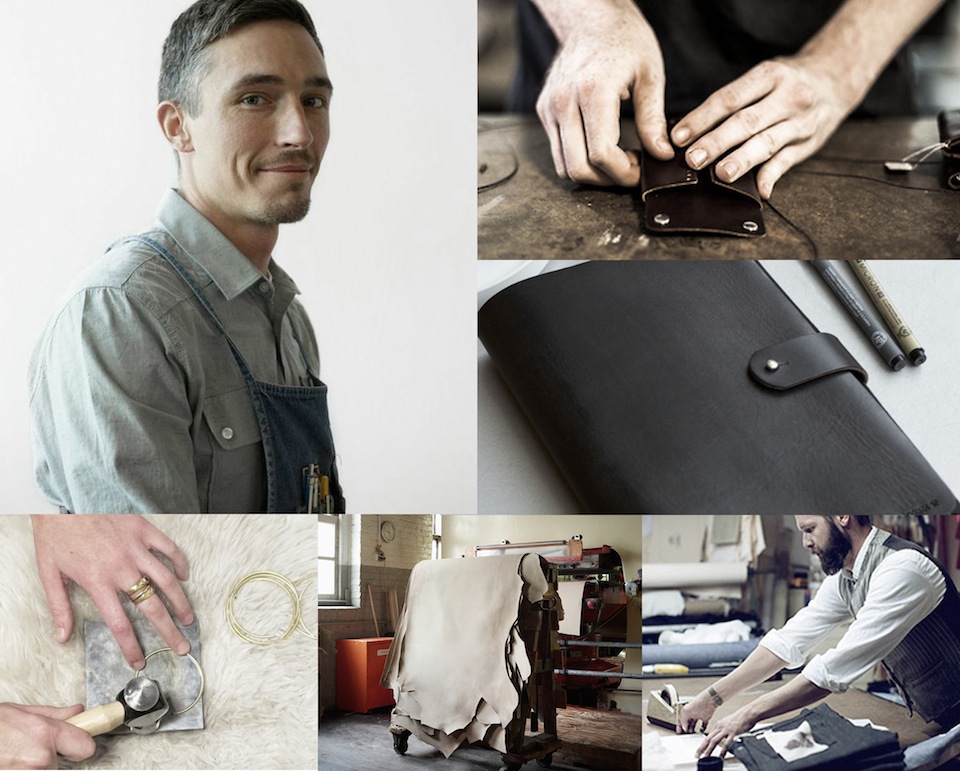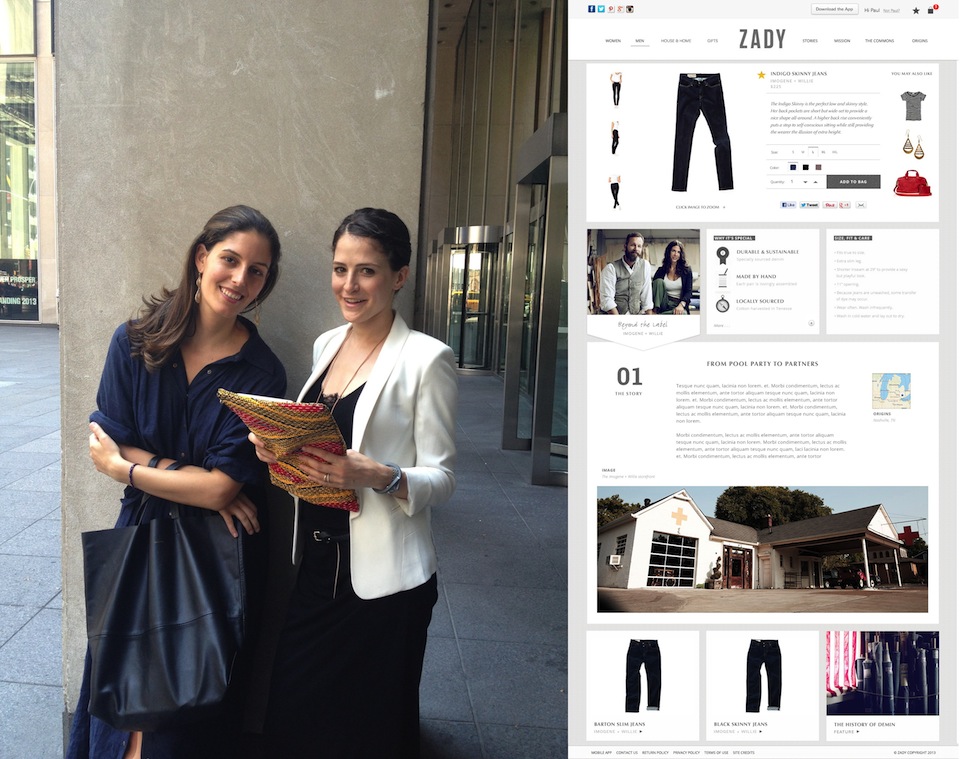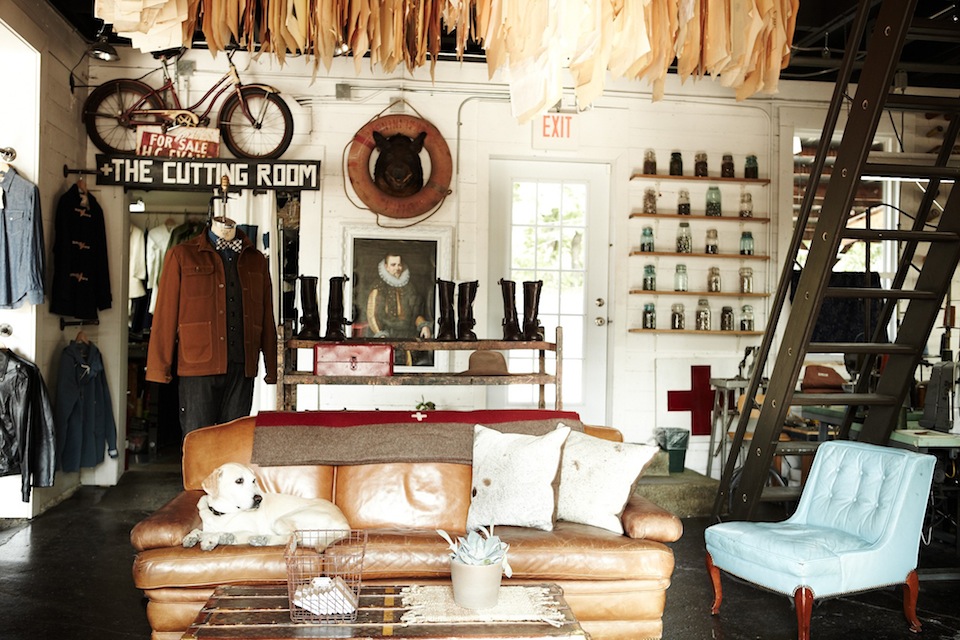US TAB
zady: fashion's clear conscience

Zady Brand Collage
Beth Lauck contributes bi-monthly posts about emerging and disruptive design and communications trends, and helps forecast why and how these changes will affect market intelligence. She also maintains a blog devoted to the intersections between fashion, future studies and trend science. She completed an internship with Trend Union in 2012 as the Assistant Editor and Community Manager of Trend Tablet, and considers her experiences with the Trend Union team an invaluable addition to her work as a trend forecaster and fashion theorist.
On August 27th, fashion gets a clear conscience. E-commerce site, Zady is opening its doors to the public and grabbing the helm of conscious consumerism. Zady is a shopping and lifestyle destination for consumers who care about the origins of of the items they purchase. Without sacrificing style or taste, Zady upholds an unprecedented commitment to manufacturing transparency: each product featured on the site has been personally vetted by Zady’s founders, using criteria for sustainability, including whether the product is locally-sourced, handmade, uses high-quality raw materials, is environmentally conscious, or made in the U.S.A. Founded by Soraya Darabi (Foodspotting; The New York Times), and Maxine Bédat (The Bootstrap Project), Zady offers craftsmanship with a clear conscience – from start to finish. Brands include Nashville-based denim designers, Imogene + Willie; Madrid, Spain’s innovative recycled material-friendly Ecoalf; and pea coat manufacturer Gerald & Stewart.
We scored an interview with Soraya and Maxine. Scroll down for an inside look into how the company came into being, plans for a brick-and-mortar store, and what trends to expect next.
Where did the idea for Zady.com come from?
We met in high school in Minneapolis, Minnesota. We became friends back then, and bonded because we both have international parents. Maxine’s parents are from South Africa; Soraya’s father is from Iran. After high school, Maxine moved to New York and Soraya to Washington, D.C. for college. Maxine graduated from Barnard College in New York City and Soraya from Georgetown University in D.C.
Years after college ended, while I (Maxine) was in Law School at Columbia and Soraya was living in New York, working for a startup, we reconnected over Facebook. Having read articles about each other, we were both interested in what the other was doing professionally. I (Maxine) was working on the non-profit I founded called The Bootstrap Project which helps revive craft traditions in the developing world and finishing law school. Soraya was advising startups based in New York City. I came across the Fast Company Magazine issue with Soraya on the cover in the airport, during a 2010 trip for The Bootstrap Project. Soraya read an article on Bootstrap’s beautiful artisanal crafts in a House and Home Magazine.
After the first coffee, Soraya asked me if I needed help with the digital strategy for TBP and of course I was happy to have the help. Over the next few months, we both realized a few things:
We liked one another still! We had complementary skills. We both shared a growing interest in understanding how supply chain works and how beautiful things are made.
As we shared articles back-and-forth about the negative impact of fast fashion, we sent one another recommendations for newly discovered products with origins we could actually trace. From this the idea of Zady was born – a company that searches the globe for- and with- the consumer to curate a selection of products that are both beautiful and ethically produced.
The connection with The Bootstrap Project as a source of craft revival and economic development was important, so we decided that 5% of proceeds from every Zady sale would go to The Bootstrap Project to help artisans in the developing world continue to create beautiful craft and preserve their important cultural tradition.
In some sense, Zady.com is necessitating a paradigmatic shift from a culture of convenience to a culture of sustainability. How will stores like H&M and Forever 21 – pioneers of fast fashion – fit into this new model?
It’s interesting. In the early 1960s, 95% of the clothing Americans wore were American-made. Today, however, the U.S. imports more than 95% of its apparel and 99% of its shoes from other nations. A substantial amount of imported goods are delivered to fast fashion chains, and to the major distribution chains. So over the last generation, we saw a paradigm shift to the culture of convenience you describe, which is also part of our culture of consumption.
H&M currently buys 400 million garments a year. And it’s not unusual for a nationwide chain to contract production for up to 100,000 garments in one style.
Zady will be part of the movement of change, to reach consumers craving an era where products were made beautifully, with an emphasis on craft and style. It’s all part of the zeitgeist, and we want to be a helpful part of it – for people who already know the origins of the food they eat, they exercise regularly to feel good and healthy, and now they’d like to feel equally healthy about the products they place on their bodies.
As more and more people gravitate to conscious consumption, the fast fashion pioneers will have to change or risk getting left behind. Much in the same way that Walmart, the apex of all things mass, now includes organic food choices (something that would have been unthinkable a decade ago) fast fashion will have to fundamentally change their structure to convince customers that their clothing is both ethically produced and can stand the test of time.
Zady.com’s commitment to manufacturing transparency is almost unprecedented in the fashion industry. How else do you hope to change the landscape of fashion in years to come?
Zady will bring prosperity and give a voice to great brands that value quality of material and production – both large and small. We particularly want to help our community discover those special products that they would not otherwise be able to find. We want to help preserve techniques in manufacturing products that may have been lost overtime in the fashion industry. We want to use modern digital tools to tell stories that deserve to be told.
Fast Fashion has made billions of dollars selling the idea that by pushing poorly made product on the cheap, they are “democratizing fashion.” But what they have really done is pushed people to believe that in order to be stylish, they have to buy clothing every week. And it doesn’t matter that it won’t last because they can just throw it out. Our hope is to turn fast fashion on its head. It’s a huge challenge, of course, but the buying public is ready. We’re tired of closets full of sub-standard.
Do you have plans for personalizing search results for returning customers?
Yes. The first iteration of Zady.com will launch on August 27. Over time, we have plans for dramatic personalization and customized features for our audience. We intend to enhance our geo-located map of the world, for instance, to default to the city or town our customers happen to be in at their moment of search. Eventually, we will show customers items their friends liked on Zady. It’s all in due time. At the moment, we are discovering the possibilities of the social-web and creating communities for @zady on Facebook, Twitter, Instagram – asking our community what features they would like to see on Zady will be key to creating our project pipelines of the future.
Zady.com addresses a new generation of conscious consumers; people empowered by the collective intelligence of their social networks and resources. What other lifestyle features and stories can we expect from Zady.com ?
One of the most profound aspects of Zady that we know will connect with our customers is the storytelling for each brand. This will involve interviews with each brand owner and creator so that our customers can develop a deeper relationship with the products when they shop on Zady. There will also be features that may tie directly or indirectly to a product on Zady. For instance, a denim brand will be accompanied by an original article that illustrates the history of denim manufacturing in the US.
So Zady will not only be a destination to purchase products, but also serve as a resource for the reader and shopper who wants to learn more – a lot more – about the products they buy.
We have a section on our website called “Origins” which begins as a dynamic map of the world, highlighting products on different spots of the map. Those product icons represent products ZADY sells. If you click on a product, information then appears on the map, detailing where the brand that sells the product is headquartered, where the raw materials that comprise that product come from, where the product was designed and manufactured. It’s data we collect and input into our own database, because we feel it is so important to detail and share.
As we hear from our community we want to report back on topics that interest them. The lens of timeless style can be applied in many assets of our life. Profiles of people with interesting careers, unique and inspiring travel destinations, investigative pieces on the fashion industry, and those pieces that strike a chord with where we are culturally, these are all the kinds of subjects we are excited to cover going forward.
Do you have any plans to grow a brick-and-mortar presence for Zady.com, or will you operate exclusively via e-commerce?
We are really focused on making the Zady.com experience compelling, exciting and seamless. Once Zady.com is launched and fully established, our goal will be to open a brick-and-mortar presence with all of the Zady products curated in one place. We are working to have something smaller scale in place for the holidays this year. Further down the road, we will launch a line of Zady-branded products… but we are focusing on one step at a time.
What fashion and lifestyle trends do you see on the horizon in 2014?
We think stylish, sustainable clothing is going to be a huge trend in 2014. It just feels like the moment has arrived, and trend and forecasting data only seem to back up our intuition. We think Americans buy roughly twenty billion garments per year. Given the recession, given our nation’s growing interest in understanding how and where their products were made, we think the timing is right to launch Zady.
Beth Lauck

Soraya & Maxime- Zady.com -

imogene+willie

